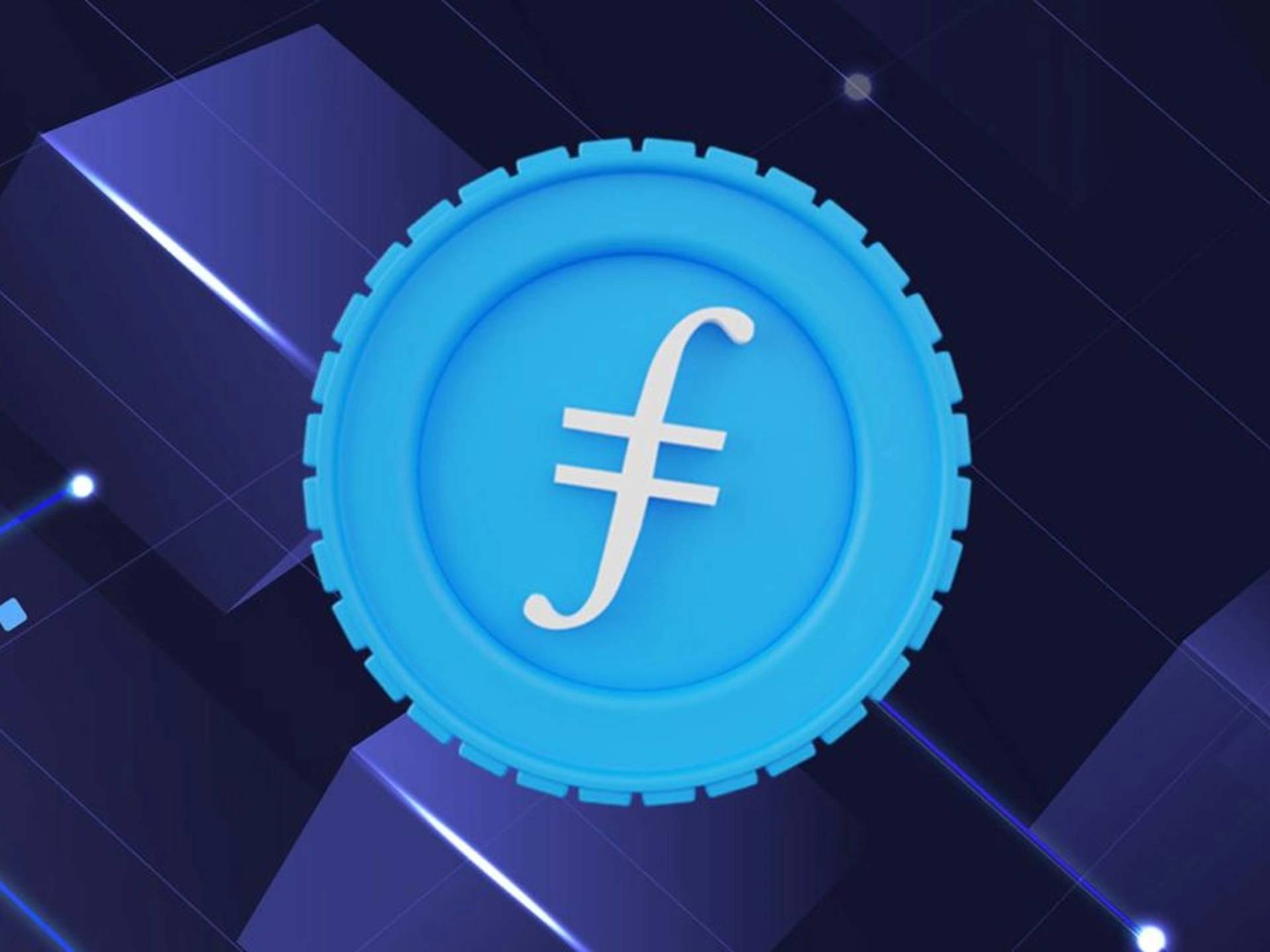订阅 wiki
Share wiki
Bookmark
Filecoin
Filecoin
Filecoin(成立于2014年5月)是一个开源的、去中心化的存储网络和市场,建立在星际文件系统(IPFS)之上,它将未使用的全球存储空间转变为一个开放的、区块链驱动的市场。其原生代币FIL促进了用户和存储提供商之间的交易,旨在创建一种比传统云存储服务更分布式和永久的替代方案。 [2]
公司
Filecoin由Protocol Labs开发,这是一家位于美国的开源研究和开发组织,由计算机科学家Juan Benet于2014年创立。该组织还负责IPFS和libp2p等项目,旨在创建可供区块链系统和AWS及Microsoft Azure等传统提供商使用的基础数据基础设施。 [3] [4]
团队
| 姓名 | 职称 || ---- | ----------- || Juan Benet[18][19][20] | 创始人兼首席执行官 || Friedel Ziegelmayer | 高级软件工程师 || Evan Miyazono | 研究科学家 || Jeromy Johnson | 软件工程师 || Karola Kirsanow | 研究项目经理 || Jakub Sztandera | 分布式软件工程师 || David Dias | 研究工程师 || Nicola Greco | 研究主管 || Jesse Clayburgh | 运营经理 || Hector Sanjuan | 软件工程师 || Chris Brocoum | 财务主管 || Colin Evran | 业务发展与运营 |
筹款
Protocol Labs 在 2014 年至 2017 年间通过三轮融资筹集了 310 万美元的资金。第一轮种子轮从初创企业加速器 Y Combinator 筹集了 12 万美元。风险投资轮于 2016 年举行,从主要投资公司和个人投资者那里筹集了 300 万美元,包括 Techammer、Stanford StartX、Naval Ravikant、Haystack、FundersClub、Fred Ehrsam、Digital Currency Group、DHVC、Boost VC 和 Ben Davenport。2017 年,他们在 BlueYard Capital 支持的风险投资轮中筹集了未公开的资金。 [7] [8]
预售和首次代币发行
2017年8月,Filecoin在Coinlist上举行了首次代币发行(ICO),通过出售FIL代币筹集了超过2.52亿美元。Filecoin充分激励了ICO期间的早期参与。虽然大多数代币发行都设定了标准的价格/代币,但Filecoin将初始代币设定为1美元,随后每次投资都会增加,这促使投资者想要尽早参与。在几个小时内,众筹筹集了1.9亿美元,导致价格达到4.58美元。Filecoin还向红杉资本、安德森·霍洛维茨和联合广场创投预售了其代币。 [9]
概述
Filecoin是一个去中心化的点对点网络,旨在通过经济激励和密码学验证实现可靠的文件存储。用户(称为客户端)付费给独立的存储提供商来存储他们的数据。这些提供商必须提交每日密码学证明,以确认数据仍在他们的控制之下。为了维持信任,存储提供商必须在Filecoin中锁定抵押品,如果他们未能满足证明要求,这些抵押品将被没收。该系统创建了一种防止数据丢失的威慑,并支持一个去中心化的存储市场,在这个市场中,中央机构不控制可用性和定价。客户端可以在选择存储数据的位置之前,根据公共记录评估提供商的性能。
Filecoin与星际文件系统 (IPFS)一起运行,星际文件系统 (IPFS)是一种用于内容寻址和数据检索的去中心化协议。大多数Filecoin节点也是IPFS 节点,从而可以通过内容标识符 (CID) 实现高效的文件访问。虽然IPFS历史上依赖于无偿志愿者来托管数据,但Filecoin增加了一个金融层,通过付费协议来支持长期存储。这种组合支持从Web3原生NFT和媒体存储到传统组织的存档服务等用例。NFT.Storage、Audius、Huddle01、Shoah Foundation和Internet Archive等平台使用Filecoin来存储各种内容类型,包括音频、视频和元数据。 [21]
技术
Filecoin网络
Filecoin网络利用星际文件系统(IPFS)技术。它是由以不同方式参与的Filecoin节点组成的分布式点对点网络。这些节点通过安全通道进行通信,以向网络分发信息、在彼此之间传输数据以及发现其他节点。它们维护一个连接良好的集群,即使有成千上万的节点参与,信息(如区块和消息)也能迅速流动。该网络代表验证客户端和矿工行为的所有完整节点。这些节点计算可用存储空间、检查存储证明并修复数据故障。 [21]
存储模型
Filecoin的存储模型基于三个关键组件:提供者、交易和扇区。提供者可以是存储提供者,存储数据并提交加密证明,也可以是检索提供者,专注于快速数据访问。交易是客户和提供者之间的协议,定义了存储或检索条款,包括价格和持续时间,并在协商后记录在链上。扇区是固定大小的存储单元(例如,32或64 GiB),存储提供者使用它们来保存数据并生成时空证明,以验证持续存储。 [26]
Filecoin 节点
Filecoin 节点(客户端)是同步 Filecoin 区块链 并验证每个区块中消息的对等方,一旦应用,这些消息将提供全局状态。节点管理 Filecoin 钱包并在其上接收 FIL。这些节点可以向网络广播不同类型的消息。例如,客户端可以发布消息以将 FIL 从一个地址发送到另一个地址。节点可以向 Filecoin 矿工提议存储和检索交易,并在交易正确执行时支付费用。客户端付费存储和检索数据,他们可以从可用的服务提供商中进行选择。如果他们想存储私有数据,他们必须在将其提交给提供商之前对其进行加密。 [24]
Lotus
Lotus是Filecoin协议的参考实现,为网络上的存储、检索和挖矿操作提供全面支持。它为开发者提供了各种工具——包括API、命令行界面以及对自定义插件的支持——以构建、扩展或与Filecoin网络交互。它作为一个开源项目进行维护。 [22]
Venus
Venus是由IPFSForce开发的Filecoin网络的开源实现,使用Go语言编写,旨在提供快速、高效和可扩展的解决方案。它支持Filecoin的核心功能,如存储、检索和挖矿,并与Lotus和其他Filecoin节点兼容,以实现互操作性。
Venus提供中文界面和文档,以满足中国市场的需求。它包括自动容错、智能存储分配和去中心化数据分发,以提高网络可靠性和效率。开发者可以通过其全面的API和命令行界面与Venus交互,进行数据存储、检索、挖矿和FIL交易。欢迎通过GitHub为Venus的开源代码库做出贡献。 [23]
星际共识
星际共识(IPC)是一个框架,通过允许无需许可地创建具有可定制共识算法的区块链子网,从而实现去中心化应用程序的横向扩展。这些子网形成一个分层结构,其中子子网与父子网无缝通信,从而提高性能,同时继承安全功能并消除对桥的需求。
IPC使用Filecoin虚拟机(FVM)作为其执行层,支持多链互操作性。它目前与Filecoin和以太坊兼容,并且旨在与Filecoin的数据存储原语紧密集成。这种方法平衡了性能、去中心化和安全性,解决了扩展区块链网络以用于dApp的常见挑战。 [25]
FIL ProPGF
Filecoin ProPGF(主动公共物品资助)计划是一项链上资助计划,旨在支持Filecoin生态系统中的公共物品项目。ProPGF旨在补充现有的RetroPGF计划,专注于主动识别和资助符合生态系统技术和社区需求的新项目和正在进行的项目。该计划分阶段开发:首先,构建技术结构;然后,纳入社区投票;最终,通过网络建立可持续的资助机制。
ProPGF强调透明度、社区参与和长期可持续性。它使用诸如Snapshot之类的工具进行去中心化投票,并使用Questbook进行赠款跟踪,从而可以公开查看应用程序和资助决策。生态系统专家委员会领导项目选择,而更广泛的社区成员也可以参与审查和投票过程。ProPGF提供非稀释性资金,以激励创建有用的工具、基础设施和资源,从而使整个Filecoin网络受益。 [32]
公共物品
FilOZ
FilOz是Filecoin生态系统中的一个公共产品设计和开发团队。其核心重点是通过安全升级、协议研发和开源软件维护来改进Filecoin协议,特别是Lotus客户端和Filecoin改进提案(FIP)。该团队参与常规网络升级,确保协议安全,并通过使核心开发更易于访问来促进更广泛的生态系统参与。[33]
FilOz由研究人员、工程师、技术项目经理和社区贡献者组成,与Curio Storage、Web3mine、Fil-Ponto和Lighthouse等其他与Filecoin相关的团队密切合作。该团队通过组织FIL开发者峰会等技术活动、促进开源贡献和分享知识以鼓励新的协议开发者,从而支持生态系统的发展。他们的工作重心是加强Filecoin的技术基础,并促进整个网络的协作进展。[33]
FIL-B
FIL-B (Filecoin Builders) 是一个独立的公共产品团队,致力于改善 Filecoin 生态系统内的开发者体验 (DX)。该团队通过提供技术资源、指导和社区参与来支持开发者,帮助他们使用 Filecoin 的去中心化存储基础设施开发链上应用程序。
他们的工作包括维护开发者文档、构建用户友好的入门工具包、举办研讨会、管理 Filecoin 以太坊虚拟机 (FEVM) 以实现 EVM 兼容性,以及组织以开发者为中心的活动。FIL-B 与 FilOz 和 FilPonto 等其他生态系统团队合作,并作为更广泛的 Protocol Labs 网络的一部分运作,以确保为不断增长的 Filecoin 开发者社区提供可访问、可扩展和有效的工具和支持。 [34]
安全性
Filecoin协议使用密码学证明来保护网络安全,通过验证每个区块并验证矿工的数据存储工作。它使用两种共识机制:复制证明(PoRep)和时空证明(PoSt)。PoSt和PoRep使用非交互式零知识证明(zk-SNARKS),使证明非常简短且易于验证。 [9]
复制证明
复制证明 (PoRep) 是一种新型的存储证明,其中服务器(即证明者 P)试图说服用户(即验证者 V)某些数据 D 已被复制到其自身唯一专用的物理存储中。它还确保 P 将唯一的物理存储专用于存储 D。P 不能假装将 D 存储两次并重复数据删除存储。这种结构在云存储和去中心化存储网络中很有用。 关于 Filecoin,存储矿工证明他们正在存储数据的物理唯一副本或副本。复制证明发生一次,当矿工首次存储数据时。PoRep 改进了存储证明变体,例如可检索性证明 (PoR) 和可证明的数据所有权 (PDP),从而防止了女巫攻击、外包攻击和生成攻击。 [9]
数据持有证明 (PDP)
数据持有证明 (PDP) 是 Filecoin 网络上的一种加密验证机制。它使存储提供商能够证明他们拥有存储数据的可立即访问的副本,而无需检索或解封数据。与 Filecoin 现有的复制证明 (PoRep) 不同,后者专为具有密封副本的长期冷存储而设计,PDP 通过允许数据保持原始、随时可用的格式来支持热存储。这使其适用于需要快速访问的用例,例如检索服务、dApp 接口、AI 数据集或数字媒体。
PDP 通过随机抽样、低 CPU 使用率和支持可变数据集合等功能实现轻量级、高效的验证。它还与现有的 Filecoin 标识符集成,确保与基于扇区的数据证明兼容。PDP 的引入扩展了 Filecoin 的功能,弥合了安全去中心化存储和传统云系统的性能期望之间的差距。它允许在 AI 训练、Web 内容交付、开发者工具和自动化数据保留策略等领域中进行新应用。它还降低了新存储提供商的技术门槛,并支持可组合、可验证的数据服务。 [27]
FIL
FIL代币是Filecoin网络的原生加密货币,用于促进交易和激励参与。它用于支付存储提供商的数据存储费用,奖励他们验证区块和处理交易,并使代币持有者能够参与网络治理。FIL的总供应量为20亿个代币。 [35]
代币经济学
| 受益者 | 最大供应量的FIL百分比 || ----------- | ----------------------- || 存储矿工分配 | 55% || 挖矿储备 | 15% || Protocol Labs | 10.5% || PL 团队和贡献者 | 4.5% || Filecoin 基金会 | 5% || 融资 - SAFT 2017 | 7.5% || 融资 - 剩余 | 2.5% |
FVM
Filecoin虚拟机(FVM)是Filecoin网络上的一个运行时环境,支持智能合约(称为参与者)的部署和执行。它支持可编程的存储和检索操作,允许开发者使用Solidity和其他编译为WebAssembly(WASM)的语言构建自定义合约。
FVM通过启用链上可编程性和Layer 2功能(如数据计算和内容交付)来扩展Filecoin的基础存储层。它与以太坊的Solidity语言和工具兼容,支持多个虚拟机,并提供对IPFS/IPLD数据原语的访问。用例包括自动存储交易续订、去中心化数据治理、跨提供商的数据复制、抵押租赁以及更复杂的应用程序,如代币化数据集和Layer 2桥。 [12][13]
Filecoin 软件
Filecoin (FIL) 可以存储在交易所或官方钱包中,如 Lotus 和 Glif。 Lotus 可用于运行节点和矿工。 Slate 是一个完全开源的文件共享网络,由 Textile、IPFS 和 Filecoin 提供支持,专为研究和协作而设计。 Powergate 提供了一个多层存储解决方案,使用 IPFS(“热”存储层)和 Filecoin(“冷”存储层)存储数据。 Fleek space daemon 是 IPFS 工具的包装器,可以尽快开始编写去中心化桌面应用程序。 它建立在 Textile threads、Buckets 和 Powergate 之上。 Starling 是一个命令行界面,用于在 Filecoin 网络上进行简化、协调、去中心化的存储。 [31]
Filecoin Ignite
Filecoin Ignite 是在 Web3 社区推出的一系列活动,该系列活动在 主网 启动之前推出。 此门户网站上提供了黑客马拉松、会议、研讨会、面试安排和详细信息。 社区中的许多团体举办了这些活动,这是一个深入了解和学习 Web3 项目的机会。 [30]
合作关系
Filecoin x Zondax
Filecoin已与Zondax合作,以便在Ledger Live上提供支持。客户端、存储提供商和其他网络参与者可以直接从Ledger设备发送和接收FIL,同时他们的私钥保持安全,并且永远不会暴露给第三方。 [29]
Filecoin x Polygon Studios
2022年2月16日,Filecoin和Polygon Studios宣布建立合作伙伴关系,以促进NFT、游戏和元宇宙行业的发展。合作始于创建教育资源、经济激励和黑客马拉松活动,以支持Polygon网络上的开发者和NFT项目与IPFS和Filecoin集成。 [16][17]
Filecoin x Avalanche
2025年5月27日,Filecoin和Avalanche通过Filecoin虚拟机(FEVM)在Avalanche的C链和Filecoin网络之间引入了原生跨链数据桥。此集成使得在Avalanche上生成的数据能够安全地存储在Filecoin上,并持续进行链上存储证明验证,从而允许跨两个网络管理支付和数据完整性。
该桥提供可验证的、去中心化的存档存储,满足企业对合规性和可审计性的需求,同时通过将存档数据卸载到Filecoin来降低Avalanche项目的存储成本。其模块化设计支持跨链互操作性,使开发人员能够构建可扩展的多链应用程序,将Avalanche的快速执行与Filecoin的去中心化存储能力相结合。 [28]
发现错误了吗?
